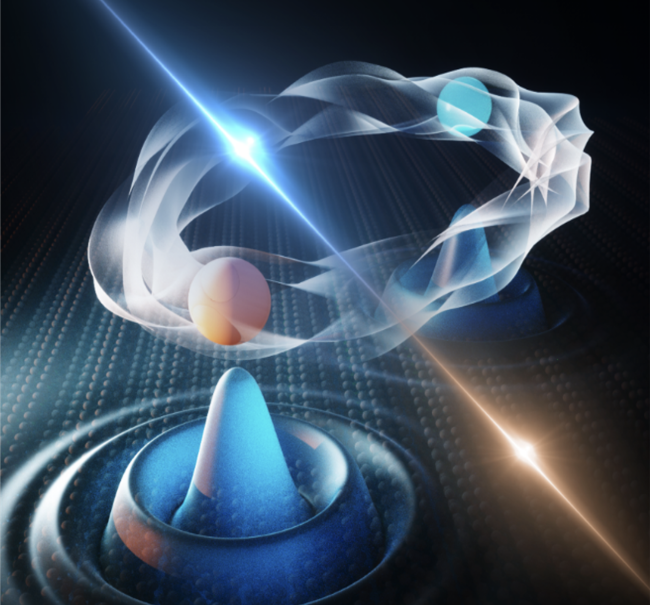 Scientists at the U. S. Department of Energy Ames National Laboratory and Iowa State University have discovered an unexpected "quantum echo" in a superconducting material. This discovery provides insight into quantum behaviors that could be used for next-generation quantum sensing and computing technologies.
Scientists at the U. S. Department of Energy Ames National Laboratory and Iowa State University have discovered an unexpected "quantum echo" in a superconducting material. This discovery provides insight into quantum behaviors that could be used for next-generation quantum sensing and computing technologies.
Superconductors are materials that carry electricity without resistance. Within these superconductors are collective vibrations known as "Higgs modes." A Higgs mode is a quantum phenomenon that occurs when its electron potential fluctuates in a similar way to a Higgs boson. They appear when a material is undergoing a superconducting phase transition.
Observing these vibrations has been a long-time challenge for scientists because they exist for a very short time. They also have complex interactions with quasiparticles, which are electron-like excitations that emerge from the breakdown of superconductivity.
However, using advanced terahertz (THz) spectroscopy techniques, the research team discovered a novel type of quantum echo, called the "Higgs echo," in superconducting niobium materials used in quantum computing circuits.
“Unlike conventional echoes observed in atoms or semiconductors, the Higgs echo arises from a complex interaction between the Higgs modes and quasiparticles, leading to unusual signals with distinct characteristics,” explained Jigang Wang, a scientist at Ames Lab and lead of the research team.
According to Wang, the Higgs echo can remember and reveal hidden quantum pathways within the material. By using precisely timed pulses of THz radiation, his team was able to observe these echoes. Using these THz radiation pulses, they can also use the echoes to encode, store, and retrieve quantum information embedded within this superconducting material.
This research demonstrates the ability to control and observe quantum coherence in superconductors and paves the way for potential new methods of quantum information storage and processing.
"Understanding and controlling these unique quantum echoes brings us a step closer to practical quantum computing and advanced quantum sensing technologies," said Wang.
This research is further discussed in: “Discovery of an unconventional quantum echo by interference of Higgs coherence,” written by Chuankun Huang, Martin Mootz, Liang Luo, Di Cheng, Avinash Khatri, Joong-Mok Park, Richard H. J. Kim, Yihua Qiang, Victor L. Quito, Yongxin Yao, Peter P. Orth, Ilias E. Perakis, and Jigang Wang, and published in Science Advances.
This project was partially supported through the Superconducting Quantum Materials and Systems Center (SQMS).
The Superconducting Quantum Materials and Systems Center is one of the five U.S. Department of Energy National Quantum Information Science Research Centers. Led by Fermi National Accelerator Laboratory, SQMS is a collaboration of more than 30 partner institutions — national labs, academia and industry — working together to bring transformational advances in the field of quantum information science.
Ames National Laboratory is a U.S. Department of Energy Office of Science National Laboratory operated by Iowa State University. Ames Laboratory creates innovative materials, technologies, and energy solutions. We use our expertise, unique capabilities, and interdisciplinary collaborations to solve global problems.
Ames Laboratory is supported by the Office of Science of the U.S. Department of Energy. The Office of Science is the single largest supporter of basic research in the physical sciences in the United States and is working to address some of the most pressing challenges of our time. For more information, please visit https://energy.gov/science.
